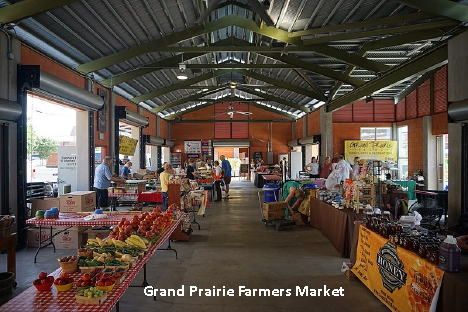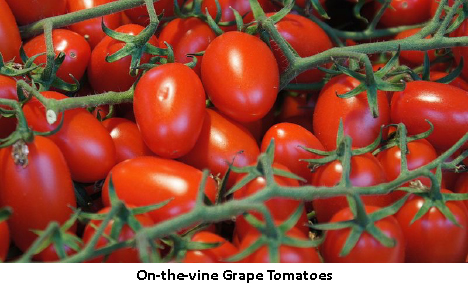These local markets are the revival tents of fresh food seekers, part of the “buy-local-eat-healthy” movement, offering personal interactions between growers and consumers. But this dirt-to-dinner arrangement presents food safety issues and handling challenges for growers, small food businesses, and consumers.
Farmers Markets Create Awareness and Community
From 2000 until 2017, farmers' markets increased by 300% in the United States. These local markets provide weekly networking for a tribe of like-minded shoppers – fresh vegetable sales, live musical entertainment, enticing samples, and a chance to mingle as you walk your dog or push a stroller. Not only do they make buying food satisfying and fun, but farmers' markets also promote economic development by allowing farmers to sell directly to the public and achieve higher returns.
 These markets promote agriculture, providing one-on-one educational opportunities for consumers to chat with growers and producers - to learn more about the foods they buy. This increases consumer appreciation of the rigors of farming and the technicalities of processing. But dirt-to-dinner comes with some food safety concerns.
These markets promote agriculture, providing one-on-one educational opportunities for consumers to chat with growers and producers - to learn more about the foods they buy. This increases consumer appreciation of the rigors of farming and the technicalities of processing. But dirt-to-dinner comes with some food safety concerns.
Food Safety Also Needs to be Local
Fresh produce is the main attraction at most local markets. Consumers, in general, have positive assumptions about the nutrition, quality, and safety of the foods they buy directly from the growers. In fact, 60% of consumers in one recent study felt that locally grown produce was safer than produce purchased at a conventional grocery.
According to the Centers for Disease Control, while nutritionally rich in fiber, vitamins, and minerals, fresh fruits and vegetables cause 46% of foodborne illnesses in the US. Some studies have found that microbial levels in farmers' market produce were higher than at retail stores.
Products from farmers' markets have been associated with at least ten outbreaks in the US. However, many may go unreported, and farmers' markets have limited abilities to trace all products sold. The documented farmers' market outbreaks include raw peas, strawberries, tomatoes, and outbreaks caused by pathogens in cheeses.
Regulations and Oversight
Just because a product is local, grown organically, or that you know and trust the seller doesn’t mean that the product is safe. Unlike your local grocery chain, farmers are exempt from the Produce Safety Rule (PSR), which requires;
“science-based minimum standards for the safe growing, harvesting, packing, and holding of fruits and vegetables grown for human consumption”
if they sell less than $25,000 annually. These rules include additional standards for agricultural water quality, biological soil additives, known as amendments, e.g., compost, and farmworker training, health, and hygiene. The Food Safety Modernization Act (FSMA) is the over-arching federal act, but other rules for food safety vary by state and locality.
Many states require produce to be grown using Good Agricultural Practices (GAP)s; a
“… voluntary audit that verifies that fruits and vegetables are produced, packed, handled, and stored to minimize risks of microbial food safety hazards.”
Ready to eat (RTE)
 Many products such as vegetables, fruits, and nuts dominate the sales at farmers' markets and are sold as ready-to-eat. As their name implies, RTE foods can be eaten raw without cooking. But cooking is frequently a “kill step” for pathogenic microbes, rendering them harmless - so RTE food requires special care and handling. The use of overhead canopies and display tables to keep RTE foods separate from rain, dirt, or pests is recommended.
Many products such as vegetables, fruits, and nuts dominate the sales at farmers' markets and are sold as ready-to-eat. As their name implies, RTE foods can be eaten raw without cooking. But cooking is frequently a “kill step” for pathogenic microbes, rendering them harmless - so RTE food requires special care and handling. The use of overhead canopies and display tables to keep RTE foods separate from rain, dirt, or pests is recommended.
Potentially hazardous foods
This includes foods requiring temperature control, such as eggs, meat, poultry, fish, and dairy products. Eggs need to be stored at less than 45 ⁰F. Meats should be kept frozen and processed in a USDA or state-inspected processing plant. For foods prepared at the farmers market, what is cold needs to stay cold, and hot needs to stay hot. As with any food operation, farmers’ markets vendors should frequently wash their hands, use gloves to prevent cross-contamination, and properly clean all food contact surfaces and utensils.
Cottage Food - Foods Made at Home
"Cottage food" is food or drink prepared in a domestic kitchen and must be sold directly from the producer to the consumer. Some state food safety laws require prepared foods to come from a certified kitchen. However, cottage rules give exemptions. For example, certain processed foods such as breads, cookies, and fruit pies may be sold without inspection if the seller or an immediate family member produced the food.
This year, there were 69 bills in 29 states’ legislatures related to cottage foods. The purpose of these bills was to relax or eliminate food safety requirements for these small retail foods. Many of these bills had titles like the Food Freedom Act, highlighting the ‘dumb’ in freedom. Fifteen of these bills were enacted into law.
- Arkansas and Montana both exempt producers of homemade food and drinks from licensure, certification, and inspection.
- Colorado allows the sale of meat of a shared animal without licensure, regulation, or inspection.
Legislation such as these put the burden of safety and inspection squarely on the consumer.
Ready or Not - What to look for and Avoid
Here are ways you can assess food safety at a farmers market or local produce stand:
- Is the facility or location clean and orderly?
- Are hand washing facilities available and used by the growers and shoppers?
- Do the vendors wear gloves and change them often?
- Do you see signs of temperature abuse for products that need to be cold or hot?
- Are free samples provided? If so, do you see the potential for cross-contamination by others?
- Are processed foods properly labeled?
Part of the fun of farmers' markets is talking to the grower or producer. Ask them about GAPs and any other trainings or certifications. Ask how they prepared their products. Use common sense. If a vendor seems slack, shop elsewhere.
There are a few products you should avoid. Unpasteurized milk and dairy products should not be consumed or purchased. Health claims, curative properties, and the “safety” of raw dairy are unsubstantiated, and the risks are severe and well-documented. Ditto cold-pressed, unpasteurized juices. Honey and products containing honey should never be given to infants under the age of 12 months as they may contain harmful bacteria which can cause infant botulism. Because these products require temperature regulation, don’t buy meats, poultry, eggs, fish, or dairy products that are raw and unrefrigerated.
Verify and Support Local Food
DO continue to support your local farmers' markets, growers and producers. Get to know your market managers, growers, and processors and verify that they follow recommended safe practices all along the growth, processing, and distribution chain. In this setting, YOU are responsible for your and your family’s health and safety.
Sources: Food Safety Challenges and Barriers in Southern United States Farmers Markets Foods DOI: 10.3390/foods9010012

